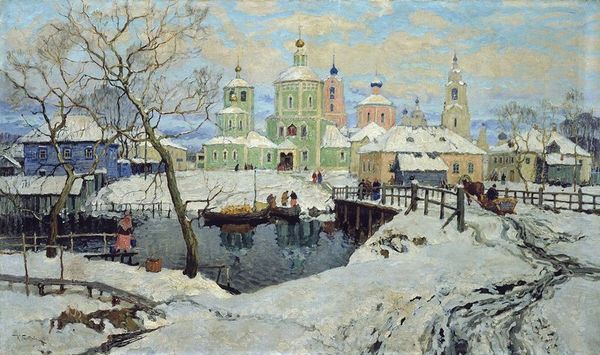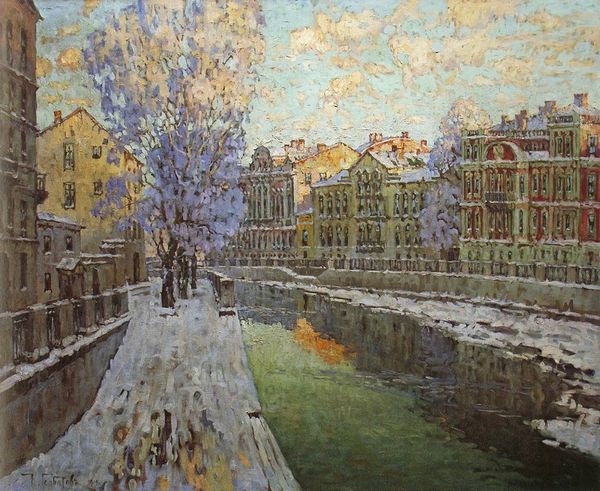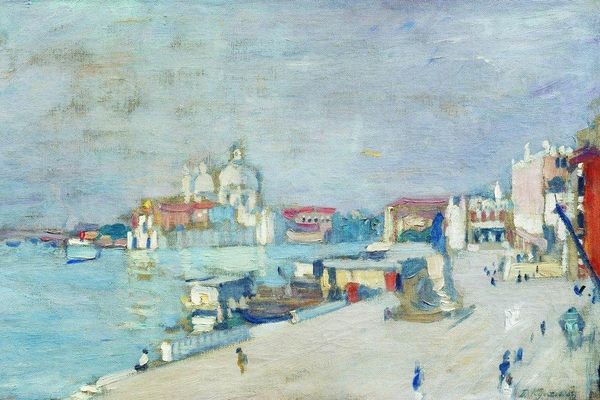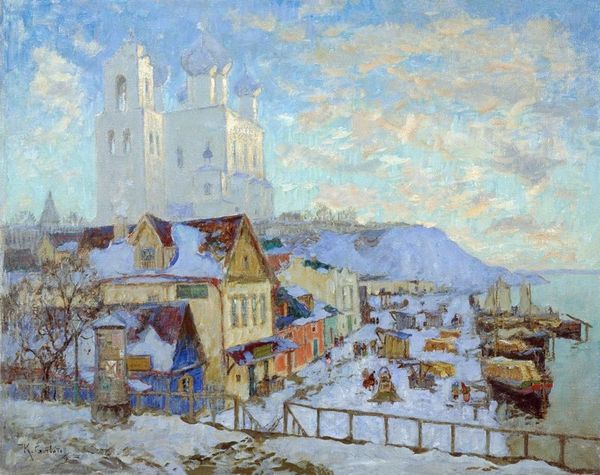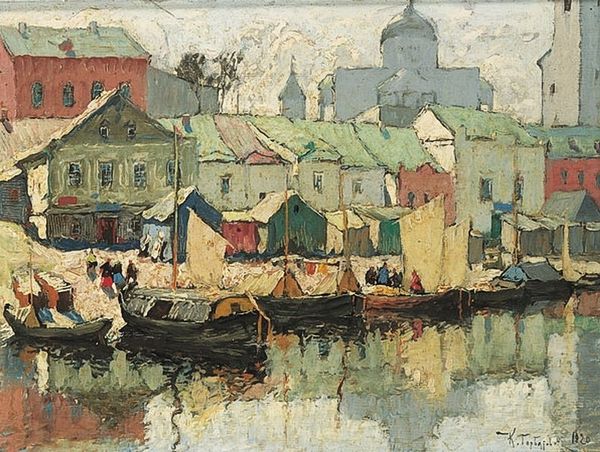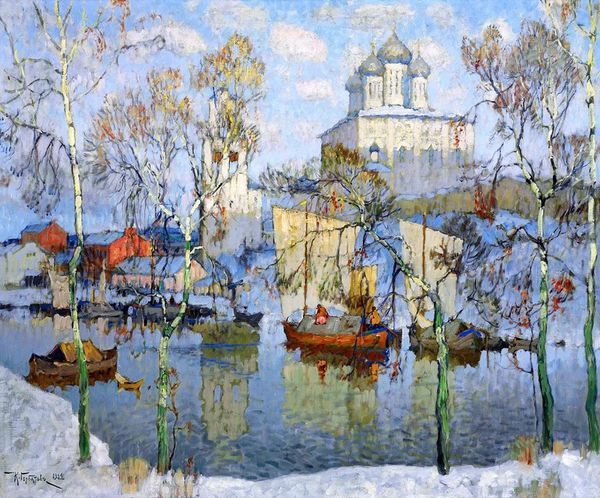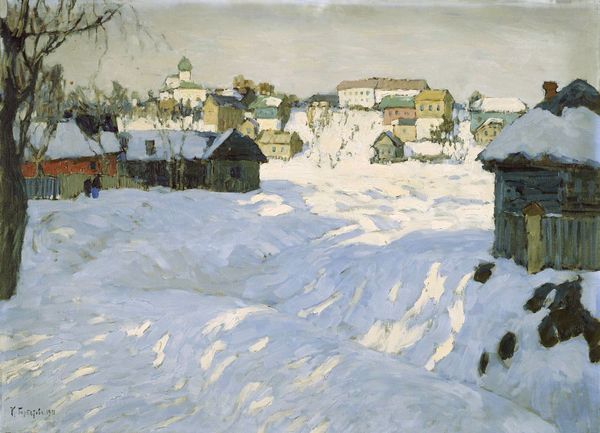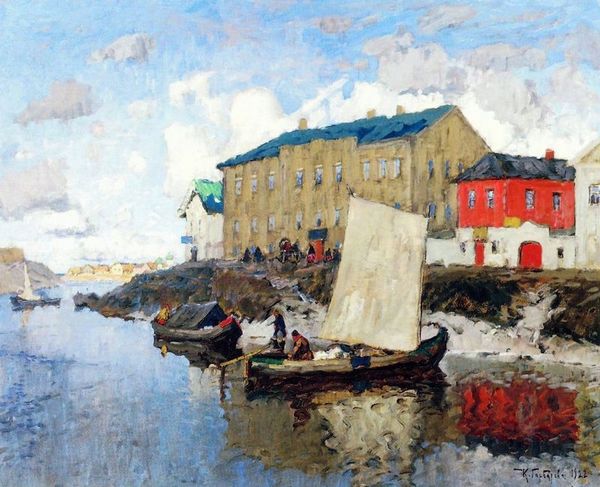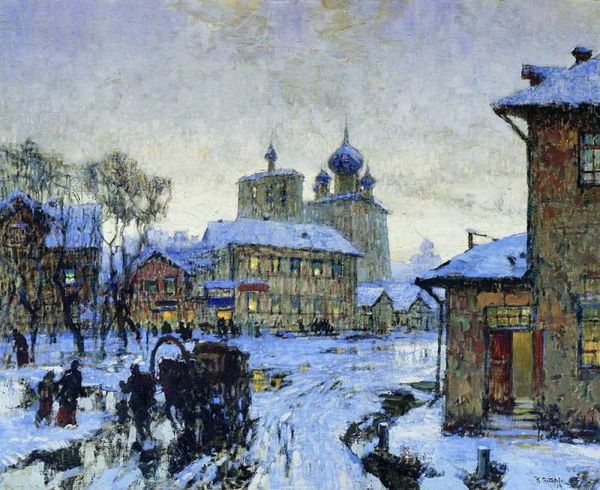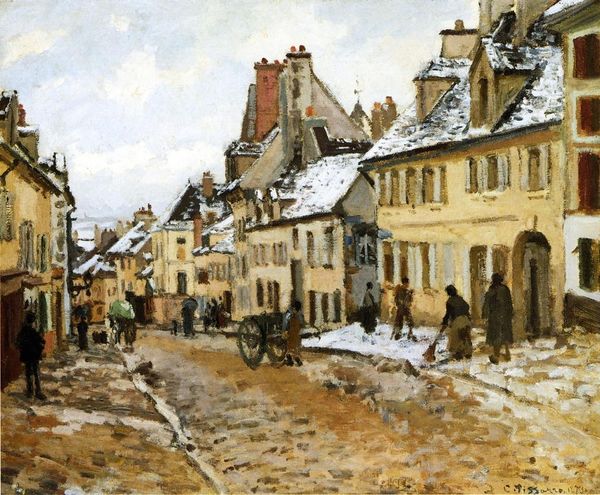
Copyright: Public domain
Curator: Konstantin Gorbatov painted "A Street of a Provincial Town" in 1920, and it’s a compelling example of Post-Impressionist cityscape painting. Editor: There’s a captivating fluidity to it, isn’t there? The oil paint itself mimics the watery, thawing street, making the materiality quite active in conveying the mood. Curator: Indeed. Gorbatov captures a pivotal moment in time, where industry and religion shaped these rural areas and post-czarist society still yearned to rebuild its economy in those formative Soviet years. Note the churches in the backdrop among what seems to be a budding, perhaps state-sponsored market, down front. Editor: Exactly. I am fascinated by how the application of oil paint becomes a representation of this transitional moment in labour. You see rough, almost industrial marks giving way to delicate brushstrokes, almost capturing the shift in social conditions that comes with post-czarist Soviet states. Curator: He's reflecting the broader artistic trends of his time but embedding it in this Russian context. Think of the itinerant artists, painting genre scenes of peasant life, capturing the hardships but also the humanity of rural Russia. It feels deeply connected to that lineage, while also pushing beyond it, right? Editor: Definitely, the medium here tells as much of a story as its subjects. The light, dabbed brushwork, contrasted with these structural strokes almost represents these changing societal norms between labor classes themselves and the tension the rise of new money created. Curator: There's also a powerful sense of nostalgia, maybe even romanticizing a particular vision of Russian identity against this tumultuous period. It evokes a collective yearning for a simpler past in art and politics. Editor: In many ways. For me, this work really emphasizes the materiality of everyday life as reflected and mediated by labor and craft. Gorbatov understood how paint could become both an object and image in a cultural moment to speak toward Russian progress, or lack thereof, through this urban sprawl. Curator: So much to think about, looking at the way this was conceived and made gives insight into its time and maybe, even some connections to ours. Editor: Yes, and I now appreciate its layers of meaning within the materials, medium, and what this city would come to be.
Comments
No comments
Be the first to comment and join the conversation on the ultimate creative platform.
